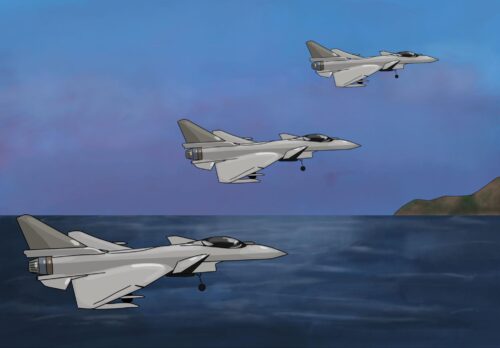China white paper on national defense: Separatists are top threat

Xinhua News Agency reports that China has issued a white paper titled “China’s National Defense in the New Era.” Its purpose: to help “the international community better understand China’s national defense.” The last white paper on military strategy was published in 2015.
The complete text of the white paper is here in English, and here in Chinese. One key point: separatism in Taiwan, Tibet, and Xinjiang is identified as the major threat to China’s national security.
China security scholar Adam Ni tweeted a useful summary of some key points, in a lightly edited précis here:
Thread on China's new defense white paper, China's National Defense in the New Era. This WP has just been released by the @chinascio. Press conference is happening now.
Thanks to you know who you are.#China #PLA pic.twitter.com/51S5dvEqBE
— Adam Ni (@adam_ni) July 24, 2019
- The world is undergoing changes “unseen in a century” with “prominent destabilizing factors and uncertainties in international security.” These changes include the acceleration of the “realignment of international powers” with the “configuration of strategic power…becoming more balanced.” Despite this, the “international security system and order are undermined by growing hegemonism, power politics, unilateralism and constant regional conflicts and wars.”
- The white paper is highly critical of the U.S., singling it out for adopting “unilateral policies,” for provoking “intensified competition among major countries” rising defense expenditure, and pushing for enhanced capabilities in “nuclear, outer space, cyber and missile defense, and undermining “global strategic stability.”
- U.S. alliances, deployments, and intervention in the region are “adding complexity to regional security. This includes the deployment of THAAD in ROK, which has “severely undermined the regional strategic balance” and security interests of other countries. See also China says the U.S. is undermining global stability (porous paywall) from Bloomberg.
- “The situation in the South China Sea is generally stable and improving,” while in the broader Asia-Pacific, the security situation is “generally stable” with SCO and ADMM Plus playing “positive roles in enhancing trust among regional countries.”
- There is a not-so-subtle dig at Japan: “In an attempt to circumvent the post-war mechanisms, Japan has adjusted its military and security policies…becoming more outwards-looking in its military endeavor.”
- “Australia continues to strengthen its military alliance with the U.S. and in military engagement in Asia-Pacific, seeking a bigger role in security affairs.” Given the context of the section, China does not seem to like this, and sees this as adding to uncertainties.
- On regional hotspots, the Korea Peninsula, India/Pakistan, Afghanistan, and territorial disputes are mentioned, but Ni does not “see anything new about the language.”
- Taiwan: The top security risk for China is “separatists.” This problem is becoming more “acute.” Taiwan continues to slide toward “de jure independence,” and this “remain[s] the gravest immediate threat to peace & stability.”
- After Taiwan are “Tibet independence” and “East Turkestan” separatist forces, which interestingly are characterized as “external separatist forces” that threaten China’s national security and social stability.
- “Territorial disputes” remain a threat to “China’s homeland security,” including U.S. actions in conducting “close-in reconnaissance on China by air and sea, and illegally enter[ing]” Chinese territory.
- “China’s overseas interests” are “endangered” by international and regional turmoil, terrorism, and piracy. Attacks on Chinese diplomatic missions, businesses, and people around the world are mentioned.
- Technology competition: “Global military competition is intensifying.” Major countries are trying to “seize the strategic commanding heights in military competition” by optimizing force structures and applying new tech such as “AI, quantum information, big data, and cloud computing.”
- The PLA has “yet to complete the task of mechanization” and is in “urgent need of improving its informatization,” pointing out that China’s military security is confronted by risks from “technology surprises.”
Photo: Reuters






